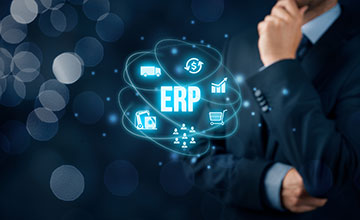The COVID-19 pandemic, and the resultant movement restrictions to curb infections, have no doubt introduced obstacles for companies that are considering or executing mergers and acquisitions (M&A) transactions. Stress on balance sheets due to declines in revenue have also made some companies averse to M&As for the time being.
All that said, significant deal flow is still taking place. While M&As across the Asia-Pacific region fell to their lowest in three years, we still saw 855 deals worth US$52.6 billion in April and 709 deals worth US$29.9 billion in May.
As countries’ lockdown measures ease and more economic activities resume, M&As will likely spring to life within the next 12 months. According to the latest EY Global Capital Confidence Barometer Asia-Pacific, 80 percent of respondents in the region and another 74 percent in the global market believe that there will be increased competition to buy assets in the year ahead. Majority of the companies are assuming a recovery in the medium-term, with 52 percent of the respondents in the Asia-Pacific region even indicating that they will actively pursue M&A activities over the next 12 months.
Cloud ERP to “Transform in Transition” or “Transform Before Buying and Selling”
For the company making the acquisition, getting the right company at the right price is certainly an achievement worth celebrating – but that would only be half the battle won. A smooth integration of the new business’ systems and processes is just as critical for a successful long-term partnership. In fact, past research from Bain & Company highlights that 30 to 60 percent of synergies after an M&A are dependent on successful and efficient IT integration.
In all the 1,564 deals that took place in April and May, the companies involved would have faced the perennial issue of how to treat their technologies in the wake of an M&A transaction. Just ask any of the executives involved and you will probably hear more than a few ‘war stories’ about nightmarish integrations of spaghetti-like IT systems and business processes.
Questions would arise on whether to merge or decouple – in the event of a divestiture – IT systems, and how. The traditional mindset is that it is better to “transition, then transform.” However, cloud-based enterprise resource planning (ERP) software now enables a more beneficial “transform in transition” or “transform before buying and selling” model. The software does so by allowing concurrent cost structure and capability transformation, while being optimised for timing.
Cloud ERP an M&A Dealmaker (Not Dealbreaker) for Companies of All Sizes
And in case you are wondering, the M&A deals we are discussing do not just relate to large multinational corporations, but much smaller companies as well.
Last month, GoBear, a financial product comparison platform start-up with about 170 employees, announced that it had acquired AsiaKredit in a bid to engage Asia’s unbanked segment. Responsible Cyber, a Singaporean cybersecurity start-up with less than 30 employees, then also announced that it had acquired Secucial, a start-up building a digital identity wallet. A quick Google News search would unravel many similar examples, reinforcing the fact that almost all reasonably sized organisations would need some software system to integrate and oversee newly acquired business units.
The key benefit of cloud ERP software is that it can scale up or down as a business’ organic and inorganic needs dictate – with comparatively minimal investments into the future. These flexible, consumption-based operating models replace aging and rigid on-premises technology that continuously incur high capital and operational expenditures.

Without cloud ERP, it is unsurprising if companies exceed their budgets for M&A integration. In a previous survey by EY, it was found that about 20 percent of companies have under-budgeted for post-deal integration. With the average integration budget being about 14 percent of a deal’s total value, this can amount to hundreds of millions of dollars for large takeovers.
Cloud ERP systems like SAP Business One can help turn a potential M&A deal-breaker into a dealmaker. Requiring minimal hardware and manageable configuration, a medium-sized organisation can often be operational on a cloud-based ERP system in one to two quarters. A large multinational corporation may require about twice that time. This practical, cost-efficient solution would therefore appeal to both the seller and the buyer.
Cloud ERP may also be especially relevant for organisations looking to divest underperforming or non-core assets. Divestitures often include transition service agreements (TSAs) provided by the seller to the buyer post-deal, including operational services or support for an interim period after the transaction closes. TSAs often include financial penalties for not exiting the agreement process by a certain date, thereby increasing the pressure on both sides to exit quickly and with minimal business impact. This can yet be challenging if the TSA includes support services for a traditional, on-premises ERP, due to the complexity involved with system configurations.
In both cases, a cloud-based approach is typically two to three times faster than that with traditional on-premises solutions, facilitating accelerated exits from the TSA. Considering that a cloud ERP system provides regular software updates, the ability to scale the number of users, easy functionality adjustments, strong security, and increased system capability, it is the best option for facilitating efficient post-deal transition.
Here are a few key factors to consider when selecting a cloud ERP vendor:
- Make the capabilities required to exit TSAs the immediate priority but ensure that the vendor’s portfolio includes more capabilities and features that can be relevant and added in phases post-TSA.
- For companies that are using an on-premises ERP solution and are acquiring a new subsidiary with minimal immediate IT integration plans, having the subsidiary first migrate to a cloud ERP system from the same vendor can be a viable option. This provides the subsidiary with autonomy and allows for easier integration with the parent organisation in the future. SAP, for instance, offers both on-premises and Software-as-a-Service (SaaS) versions of its SAP Business One ERP solution.
- To maximise the true value of cloud ERP and reduce implementation timelines, consider adopting the standard workflows that are inherent in the system, such as accounts receivable and accounts payable. These workflows are typically designed with best-in-class processes in mind and often require little to no further customisation. If customisation is required, try to implement a 10 percent threshold that should not be exceeded.
- Evaluate costs driven by number of users, which is usually priced in tiers; transaction volumes or the amount of data that must flow through the system; the difference between core functionalities like general ledger that are built-in and additional functionalities like tax, reconciliation, HR, payment gateways, etc. – which may or may not cost more. Continuous cost discipline is critical.
Adopt a Global View When Selecting Your Cloud ERP Solution
As a final and most important criteria when setting a business up for a successful M&A, consider if the ERP vendor can support global operations.
A global ERP vendor allows multi-company organisations to streamline and standardise operations across multiple geographies, divisions, and departments – from supply chain and inventory management to customer relationship management (CRM), financials and accounting.

As organisations expand through M&A activity, they tend to start dealing with a smorgasbord of systems that were already previously in place. The challenge of course is integrating these systems or the data from these systems with that of the company headquarters.
While manual integration to derive a single overview of the business is not an insurmountable task, it becomes increasingly complex, time consuming and costly as the business expands further and the number of siloed systems stack up. Furthermore, if expansion of the business leads to the setting up of subsidiaries in multiple countries with different legal, taxation and accounting requirements, the presence of these disparate tools becomes an even greater operational headache.
Here are some potential situations that call for the pre-emptive implementation of a global ERP system:
- Having multiple subsidiaries in different countries: With a global ERP system, critical business processes can be streamlined and standardised. Such a system provides a single and aggregated view into operations across multiple locations. This means less resources are required to manage information, that the information flows more swiftly throughout the business, and executives can make faster and more informed business decisions.
- Having to manually reconcile financial and accounting information: When a local office manages its accounting data through a siloed financial system, its reports must then be manually reconciled and rolled up into a global view. All of this is extremely time consuming and prone to human error. A global ERP system’s automated reconciliation process helps minimise the errors that often occur when multiple spreadsheets and manual data transfers are involved. Financial close times are also sped up with staff at headquarters no longer dependent on local teams to supply information or having to synthesise accounts data in different formats.
- Dealing with multiple taxation and legal environments: Taxation, reporting, and other financial regulatory requirements are in a constant state of flux, and small changes in one location can have unforeseen implications on business conducted with partners and customers in other locations. A strong global ERP system can handle multiple tax schedules, be updated with the latest regulatory requirements, and automatically factor in currency conversion rates. And because such systems can generate receipts and invoices in multiple languages, customers can be assured that the documentation and information they receive always reflects the relevant updates in their location.
The Cheaper, Faster, and Better Solution for Closing M&A Transactions
At the end of the day, one of the most important factors for a successful M&A deal is aligning and integrating the merged entities’ ERP systems – which include finance and accounting, in a way that both maximises operational agility for the business units and enables enterprise-wide visibility, analysis, and control.

Moving to a global, cloud-powered ERP system provider will help consolidate financial reporting, streamline business process, and save time. Additionally, a proven solution from a trusted provider offers peace of mind that the business is adhering to every hyper-localised requirement.
By selecting cloud ERP software like SAP Business One, both the seller and the buyer can leapfrog to a more advanced and flexible operating model with minimal IT infrastructure needs, together. In a post-COVID-19 world where increased competition to buy assets will coincide with businesses having to be even more cost-disciplined, cloud ERP could very well prove to be the cheaper, faster, and most suitable solution.




